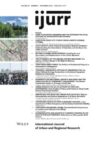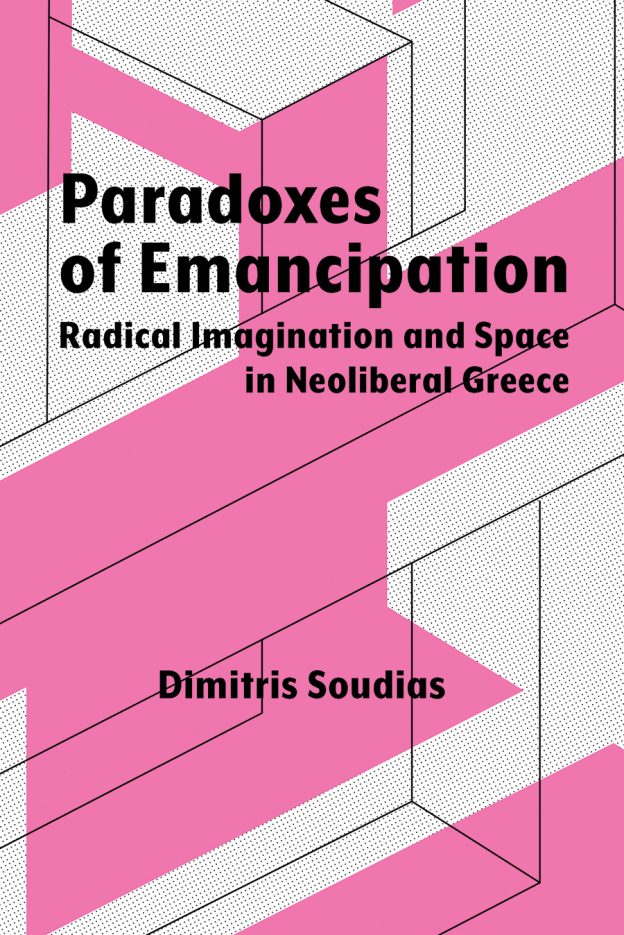How can a public square become a site of transformation? In Paradoxes of Emancipation: Radical Imagination and Space in Neoliberal Greece, Dimitris Soudias, a political scientist specializing in political sociology and cultural economy, explores the emancipatory potential of everyday practices that emerged in the occupied Syntagma Square in 2011. Engaging deeply with participants’ narratives, he traces the evolution of their perspectives before and throughout the ‘years of crisis’ in Greece. Through careful observation and rich analysis, Soudias reveals both the possibilities and paradoxes of emancipation embedded within neoliberalism. Drawing from his own participation in the occupation of Tahrir Square in Cairo (2011) and driven by a desire to understand ‘the euphoria and hope associated with this experience’ (p. 28), Soudias conceptualizes ‘experience as intersectionally constructed’ (p. 20), seeking both to make sense of it and generate new knowledge. For scholars and practitioners, the book offers a vital resource for understanding how practices can transform subjectivities, suggesting that the extraordinary spatialities produced by contemporary social movements, through radical imagination, constitute terrains for envisioning alternative pathways.
What led participants to describe their experiences at Syntagma as transformative? How did they renegotiate their identities before, during and after their involvement? Could these questions be answered through the spatiality of the occupied Square, which is a framing capable of establishing new socio-spatial relationships? A final and evocative inquiry arises: What are the characteristics of an alter-neoliberal critique that can sustain a critical distance from reproducing neoliberal values and rationalities? Crucially, how does radical imagination emerge, consisting of both a critical stance towards the existing system and the creation of an alternative way of life within it?
The book unfolds across six chapters. Chapter One, ‘Modernizing Greece: from barbershops to hair salons’, introduces governmental public rhetoric and policy shifts after Greece joined the European Union in 2001. It explores how market competitiveness expanded into the social realm, framing individuals as subjects of responsibility for managing uncertainty on their own. The chapter highlights how neoliberal modernization contributed to the depoliticization of both politics and everyday life.
Chapter Two, ‘“Waking up”: spatialized crises and unthought-of experience’, explores how participants re-evaluated the normative theorization of crisis through ‘unthought of’ experiences that emerged via their presence and stasis as practicing the Square. The ‘waking up’ metaphor, captures the affective intensity of these experiences, signifying a departure from neoliberal imagination and a movement toward a new collective reimagining of space and its possibilities.
Chapter Three, ‘Aspiring the utopian: the alter-politics of radical imagination’, discusses how the spatiality of occupied Syntagma Square materialized through alternative collective norms and the ethos of direct democracy. Combined with spontaneity, these elements shaped common spaces of prefiguration into which, through radical imagination, egalitarian forms of organization were simultaneously envisioned and enacted.
Chapter Four, ‘Challenging the dystopian: the anti-politics of demystification’, examines the effects of state repression on political subjectivity. What was the aftermath of police violence? ‘[T]he tear gas as bonding’ (p. 177) becomes a key phrase that frames how solidarity practices emerged both as a response and as performances of togetherness, thus transforming the debates in a political way. This chapter theorizes about how the product of anti-politics, through the demystification of the state power, may result in the (re)politicization of self and public discourse.
Chapter Five, ‘Paradoxes of emancipation: between resistance and reproduction’, investigates the legacies of the Square’s prefigurative common spaces. Much like parasitic organisms, key collective experiences from the Syntagma Square occupation transferred into neighborhood initiatives and the refugee solidarity movement of 2015. The chapter also unpacks the paradoxical relationship between the emerging subjectivities and their remaining neoliberal entanglements. It raises a critical question: how might subjects, in attempting to challenge power hierarchies, simultaneously rely on neoliberal tools to navigate their everyday struggles?
Chapter Six, ‘Toward an alter-neoliberal critique’, proposes the principles necessary for an alternative neoliberal critique, one that transcends the very rationalities it seeks to oppose. It asks: How can public pedagogies, grounded in ‘qualitative, value-based judgments (in their ethical sense)’ (p. 246), challenge the economization of life? Furthermore, how may the psychologization of social relations and subjectivity and the emphasis on productivity reproduce existing power relations?
Soudias’s approach, characterized by close attention to participants’ reasoning and meaning-making, offers a deep understanding of how difficult concepts such as radical imagination are not only theorized, but lived. The political analysis is systematic, cautious, engaging and, despite the book’s dense theoretical context, it succeeds in establishing a good analogy between observation and theory. Discussions with interviewees play a vital role in unfolding the book’s argument. Soudias attends closely to their descriptions—where they report moments of change, their feelings, thoughts and aspirations—thus discerning both the values that drive their behavior and the traps within these values, shaped by normative standards of neoliberalism. The book compellingly demonstrates how interviews can become rich sites of knowledge production, offering a significant model for qualitative researchers interested in the intersection of space, subjectivity and political imagination. Ethnographic walks with participants—though only partially explored—act as catalysts for the emergence of embodied memories, revealing how memory can sometimes be spatially triggered.
By centering on the spatial and temporal dimensions of urban struggle, both as an enabler and a product of alternative social bonds, the study situates firmly within critical geography and urban studies discussions. It particularly engages with ongoing debates about the emancipatory potential of urban commoning, everyday social encounters and the role of infrastructures of care. It is equally valuable to social and political science discussions, offering a layered, holistic view of the socio-spatial dynamics, tracing the shifting imaginaries, aspirations and collective possibilities that shaped Greece under austerity. While rooted in the specific context of Greece and the 2011 Syntagma Square occupation in Athens, the book resonates far beyond. It engages broader questions as to how urban movements reconfigure the meaning of public space, its social production and its potential as commons. These issues align with global struggles during the occupied squares movement, such as the occupations of Tahrir Square in Cairo (2011), Wall Street in New York (2011) and Gezi Park in Istanbul (2013).
Soudias succeeds in tracing the emergence of alternative common values, alongside the inevitable contradictions that coexisted. Offering much-needed reflections on the formation of subjectivities that resisted the dystopian, individualizing logic of neoliberalism and rejected the logic of the ‘one-way street’, the book acknowledges the unresolved questions that persist. In an era still marked by political uncertainty, social fragmentation and precarity, Paradoxes of Emancipation reminds us that cultivating radical imagination—both as critique and alternative practice—is not only possible but essential for resocializing contemporary struggles and envisioning alternative futures.
Kallia Fysaraki, National Technical University of Athens (NTUA)
Dimitris Soudias 2023: Paradoxes of Emancipation: Radical Imagination and Space in Neoliberal Greece. Syracuse, NY: Syracuse University Press
Views expressed in this section are independent and do not represent the opinion of the editors.

